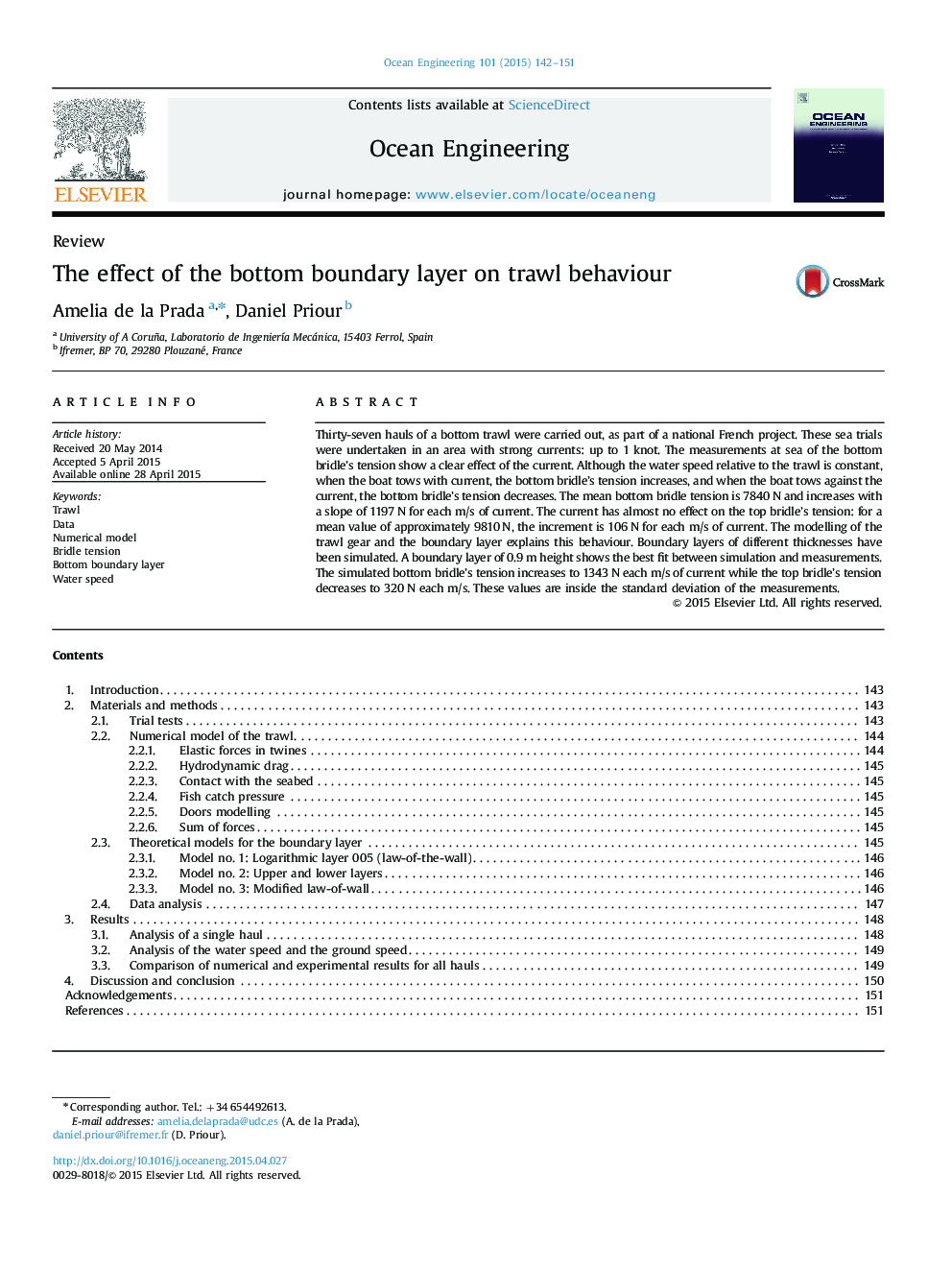| Article ID | Journal | Published Year | Pages | File Type |
|---|---|---|---|---|
| 1725459 | Ocean Engineering | 2015 | 10 Pages |
•Measurements at sea of a bottom trawl behaviour.•Measurements show that the tension in top and bottom bridles is affected by the relative water speed profile.•Modeling of the bottom trawl with FEM.•Incorporation of the bottom boundary layer to the numerical model.•Numerical results fit pretty well with the measurements.
Thirty-seven hauls of a bottom trawl were carried out, as part of a national French project. These sea trials were undertaken in an area with strong currents: up to 1 knot. The measurements at sea of the bottom bridle’s tension show a clear effect of the current. Although the water speed relative to the trawl is constant, when the boat tows with current, the bottom bridle’s tension increases, and when the boat tows against the current, the bottom bridle’s tension decreases. The mean bottom bridle tension is 7840 N and increases with a slope of 1197 N for each m/s of current. The current has almost no effect on the top bridle’s tension: for a mean value of approximately 9810 N, the increment is 106 N for each m/s of current. The modelling of the trawl gear and the boundary layer explains this behaviour. Boundary layers of different thicknesses have been simulated. A boundary layer of 0.9 m height shows the best fit between simulation and measurements. The simulated bottom bridle’s tension increases to 1343 N each m/s of current while the top bridle’s tension decreases to 320 N each m/s. These values are inside the standard deviation of the measurements.
